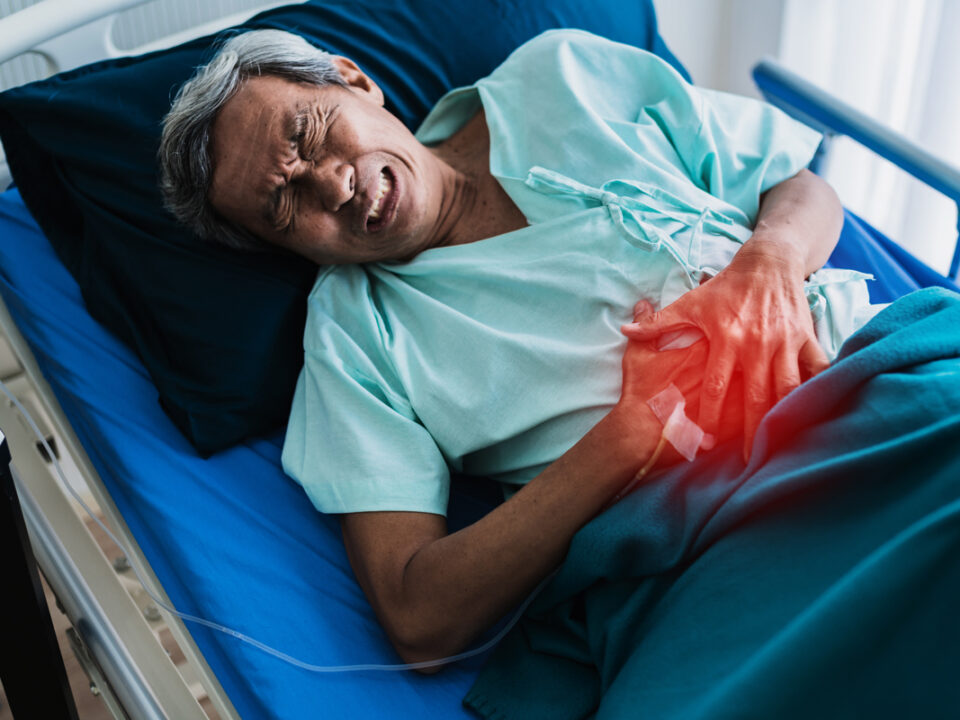
Hyperbaric Oxygen Therapy and Chronic Stress Management
21/02/2024
Role of Hyperbaric Oxygen Therapy in Osteomyelitis
22/02/2024Hypoxia, a condition characterized by insufficient oxygen supply to tissues, is a hallmark of various pathological states, including cancer. Tumor cells adapt to low oxygen levels by triggering survival mechanisms, promoting angiogenesis, and altering gene expression profiles. Hyperbaric oxygen therapy (HBOT) emerges as a promising adjunctive treatment approach for hypoxia-related conditions, including cancer. By exposing patients to increased atmospheric pressure and elevated oxygen levels, HBOT aims to improve tissue oxygenation, suppress tumor growth. This is what HBOT India has to say.
Hypoxia & Cancer
Hypoxia, a low oxygen level, is present in most cancers. Still, its amount varies depending on the tumor type. A growing tumor needs oxygen greater than the amount available. Also, the distance between cells and the blood vessels already there grows. This makes it harder for oxygen to spread throughout the environment and makes the air even less oxygenated. On average, the amount of oxygen in hypoxic tumor tissue is between 1% and 2% O2 or less. That is why hypoxic tumor tissues need more oxygen to grow.
The oxygen level of the tumor can be affected by several things, such as how oxygenated the tissue was when it was first formed, the tumor size and stage, the method used to measure oxygen, and the part of the heterogeneity tumor tissue where the measurement was taken.
Normoxia
Tissue normoxia, also called physoxia, is the state where healthy tissues have the right amount of oxygen in their surroundings. Because each organ has its own network of blood vessels and level of metabolic activity that’s why healthy tissue’s ability to get oxygen from one organ to the next can be very different. The amount of oxygen in a person’s brain can be as low as 4.6% and as high as 9.5% in the renal cortex of kidney. On average, 9.5% of the oxygen in the body is found in the kidneys. These oxygen levels are very different from what was found in the tests done in a lab. This means cell culture is done in hyperoxic conditions instead of the physoxic levels seen in similar organs since the oxygen concentration usually used in a lab is 20.9% O2.
Acute Hypoxia
Cancer cells may respond to low oxygen by dying or surviving. Hypoxia exposure period affects cancer cell response. In most cases, acute hypoxia is induced by the temporary closure of blood vessels for a few minutes.
Cyclic Hypoxia
Reversing causes cycle hypoxia or oxygen fluctuations. In vitro studies of acute hypoxia frequently involve continuous hypoxia for up to 72 hours. Hypoxia helps cells to survive by initiating autotroph, an apoptotic and metabolic response. Autotroph requires lower oxidative metabolism. Other researchers found that cyclic hypoxia increases reactive oxygen species (ROS), which promotes tumor cell survival and proliferation. Changing blood flow and persistent hypoxia cause increased cellular alterations. Larger tumors show more alterations, which lead to hypoxia. Hypoxia affects DNA repair processes such as homologous recombination and mismatch repair, causing genetic instability and mutagens. Hypoxia also causes DNA breakage and replication errors. Acute hypoxia delays DNA damage and apoptosis, causing genetic instability.
Cycling hypoxia indicates tumor oxygenation. Intermittent re-oxygenation happens in cancer because the blood vessels in the tumor are not working right and the blood supply isn’t uniform. Chronic or acute hypoxic areas can influence clinical responses to therapy by affecting tumor growth, dissemination, and cell death.
Hypoxia causes resistance to radiation and chemotherapeutic in cancer patients
Blood Vessel Formation
Endothelial cells form the blood vessel walls, creating a seal between blood and tissue and interacting with the Extracellular Matrix (ECM). As the tumor grows, abnormal angiogenesis can happen in cancer cells with a blood supply that grows too quickly.
Metastasis is linked to increased angiogenesis. A permeable and heterogeneous vasculature allows tumor cells to circulate and move to new, unaffected areas, away from unfavorable hypoxic conditions. Over-expression of HIF- sub-units in tumors and metastases is linked to aggressive malignancies and a low survival rate.
Hypoxic cells are more likely to metastasize and be more aggressive and invasive. For example, multiple myeloma cancer cells grown in the lab under low oxygen (Hypoxia) conditions and then injected into mice moved to the new bone marrow faster than cells grown in normal conditions.
Radiation and Drug Resistance
Despite treatments that induce apoptosis in cancer cells, they remain resistant to this process. A vast number of cancer patients relapse and suffer from recurring tumors as a result of the micro-residual disease. A sub population of tumor cells can adapt to hypoxic conditions and become resistant to chemo- and radiotherapy. One of the most critical hurdles to cancer treatment is cancer cells’ failure to undergo apoptosis in response to treatment. The resistant sub population of cancer cells, known as micro-residual disease, is the cause of recurrence and frequent malignancies in cancer patients. This condition can also cause metastasis or cancer spreading to other body regions.
Hypoxia in a tumor arises from uncontrolled cell proliferation, changed metabolic processes, and abnormal tumor blood arteries, all of which decrease oxygen and nutrition supply. However, a subset of tumor cells can adapt to Hypoxia and acquire resistance to chemotherapy and radiation even though Hypoxia is known to be lethal to the vast majority of cells. It has been at least 60 years since it was discovered that Hypoxia has a role in the phenomenon known as treatment resistance.
As a result of Hypoxia, cancer cells become more resistant to treatment. Underlying reasons are:
- Stopping cell division (quiescence), a condition of limited cell development that protects cells against external stresses
- Inhibiting cell death processes such as apoptosis and senescence
- Controlling autotroph, p53, and mitochondrial function.
Altered Drug Transport
Additionally, reduced oxygenation alters drug transport in tumor tissue, which leads to chemo-resistance, by reducing oxygen, which is essential to many chemotherapeutic toxicity.
Tumor Micro-environment
Without contact, crosstalk, and support from the tumor micro-environment, including stromal cells, immune cells, EC, ECM, cytokines, and other mediators, the tumor would not thrive. In hypoxic tumor tissue, hypoxia-inducible alterations influence cancer cells and the tumor micro-environment. Hypoxia increases pro-androgenic chemicals, blood vessel development, and oxygen and nutrition for tumor cells. Hypoxia stimulates platelet, leukocyte, and smooth muscle cell activity by regulating inflammatory cells and growth factors. Increased EC adhesion to neutrophils facilitates NK cell migration and local inflammation.
Hypoxia regulates NO syntheses expression, contributing to vasoconstriction. Targeting EC will prevent or reverse tumor development since they nourish blood vessels.
Hyperbaric Oxygen Therapy to treat Hypoxia
The first response in cases when Hypoxia is the cause of illness is to provide more oxygen to the patient. It is crucial to know how much oxygen gets into hypoxic tissues. We can see that HBOT alters plasma oxygen levels and aids hemoglobin in reaching its maximum oxygen-carrying capacity by applying Dalton and Henry’s concepts. Hemoglobin’s ability to carry oxygen is unaffected by low oxygen pressure, and it stays at 20 ml O2/d of blood. Only the oxygen content of the plasma varies. Tracheal oxygen partial pressure rises to 713 mm-Hg with 100% oxygen. Blood has an O2/d of 21.71 at 100% oxygen. This represents a net increase in O2/d of 7.26%.
Only areas with sufficient blood can receive oxygen distribution from this application. 100% oxygen cannot cure the underlying illness, just like in the case of ischemia. 100% oxygen is used in HBOT at 1-3 ATM local pressure.
There are main and secondary consequences from HBOT. Improving oxygen tension and delivery, decreasing HID-mediated effects, and increasing antimicrobial activity are examples of direct impacts. In addition to lowering ROS, HBOT increases inflammation, vasoconstriction, angiogenesis, and bodily repair.
There are 1.5 to 3.0 ATM HBOT pressures. Reduced partial pressures reduce the risk of barotrauma to the teeth, sinuses, eardrums, and lungs. Although they are uncommon with HBOT, oxygen toxicity seizures have been documented. Further research is necessary to determine the pressures and duration of standardized HBOT.
Hyperbaric Therapy is useful in the treatment of diseases in which tissue damage due to low oxygen levels occurs. HBOT is a medicine that treats pathological disorders by applying pressure to oxygen. The transcription of DNA, cell organelles, tissue structure, and organ function are all altered by hyperbaric oxygen. Permanent gains can be achieved in 25–35 sessions.
More oxygen dissolves in plasma at 3 ATM HBOT due to the higher partial pressure of oxygen. Oxygen is delivered by the dissolved concentration in plasma, which is stored by hemoglobin. By increasing the oxygen river’s volume and flow, HBOT improves tissue delivery. HBOT may theoretically boost the availability of oxygen.
Summary
Hypoxia has an impact on cancer cells and the tumor micro-environment (TME) during the course of cancer development. It regulates metabolism, cell maintenance, the creation of new tumor blood vessels, and cell death. It also results in the transfer of cancer cells and the development of traits resembling cancer stem cells. Drug resistance develops as a result of these traits. The transnational pathways that activate hypoxia regulate every phase of the genesis of cancer. The quality of life and survival rate of the patient are impacted by increased tumor development and severity. HBOT prevents oxygen deficiency, encourages angiogenesis and healing, combats infection, and reduces inflammation.
All tensions manifest physically as inflammation, which occasionally gets out of hand. Chronic illness may be brought on by or made worse by this. The effects of HBOT against inflammation are growing. Although HBOT may be a novel class of drug, more research is needed to determine the dosage and illness indications.
Read More:
https://www.ncbi.nlm.nih.gov/pmc/articles/PMC9961389/
https://www.ncbi.nlm.nih.gov/pmc/articles/PMC10583178/




